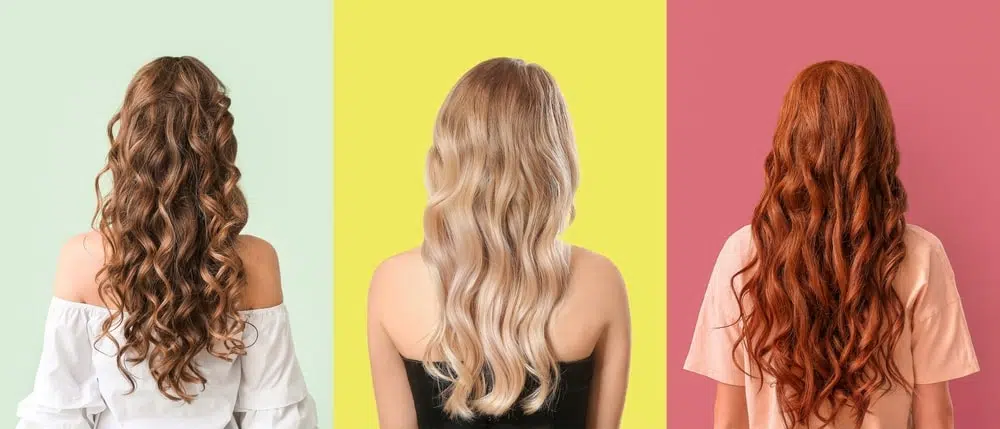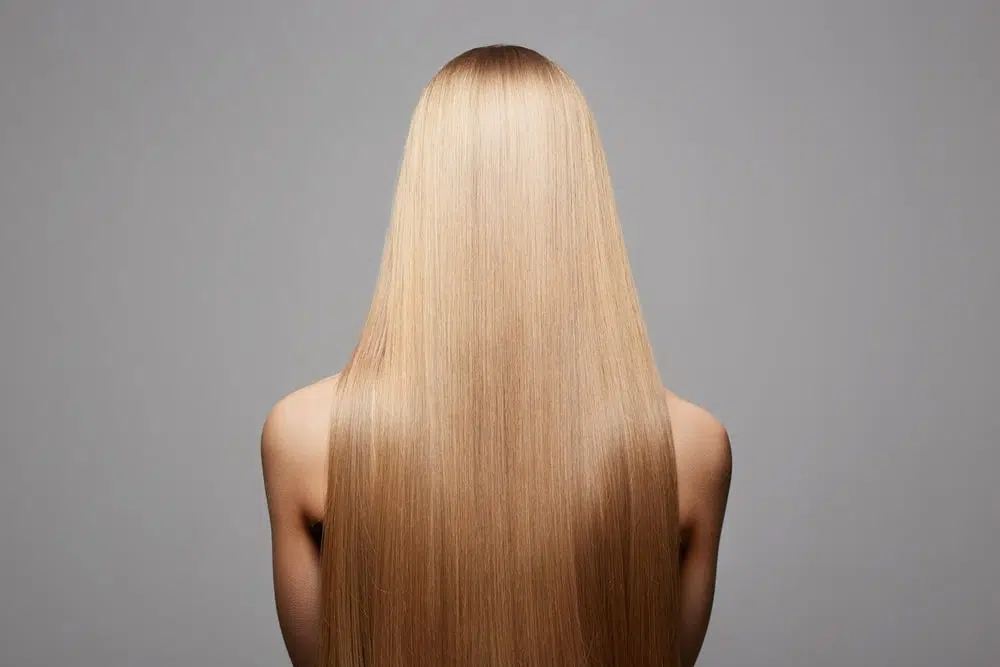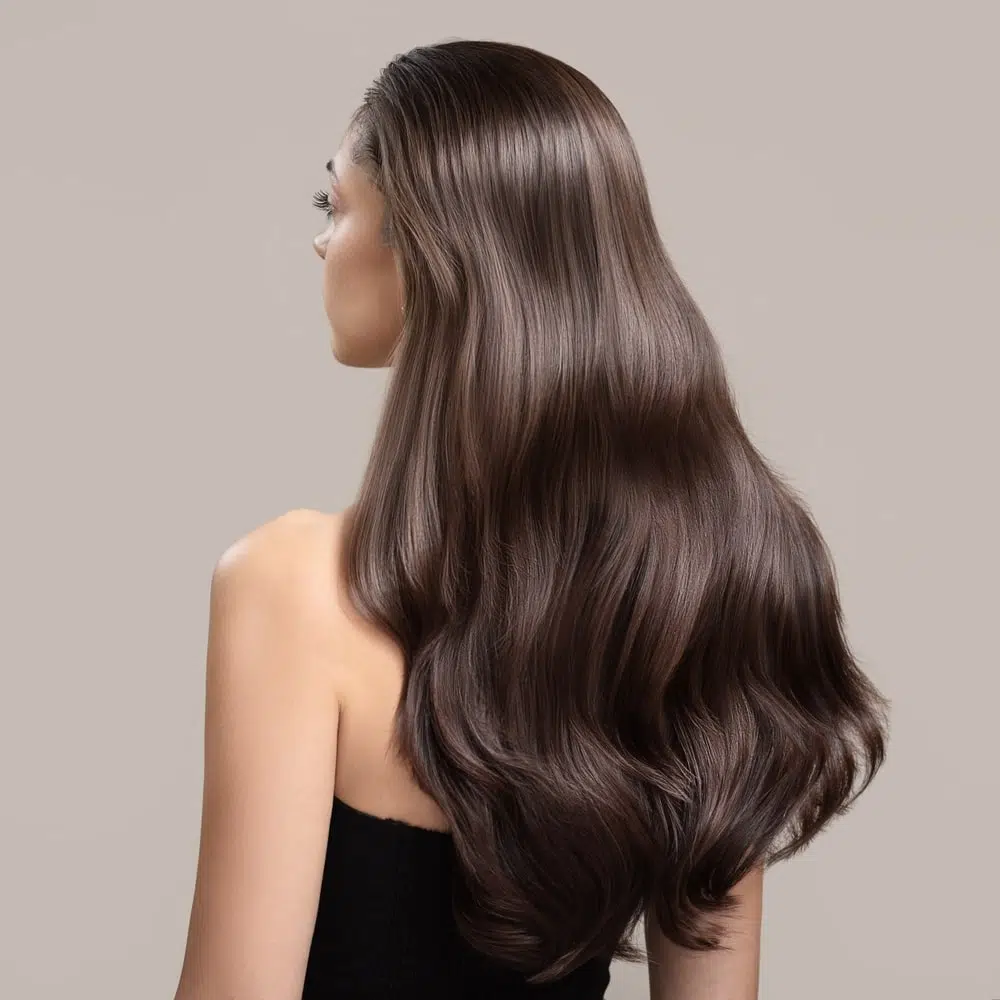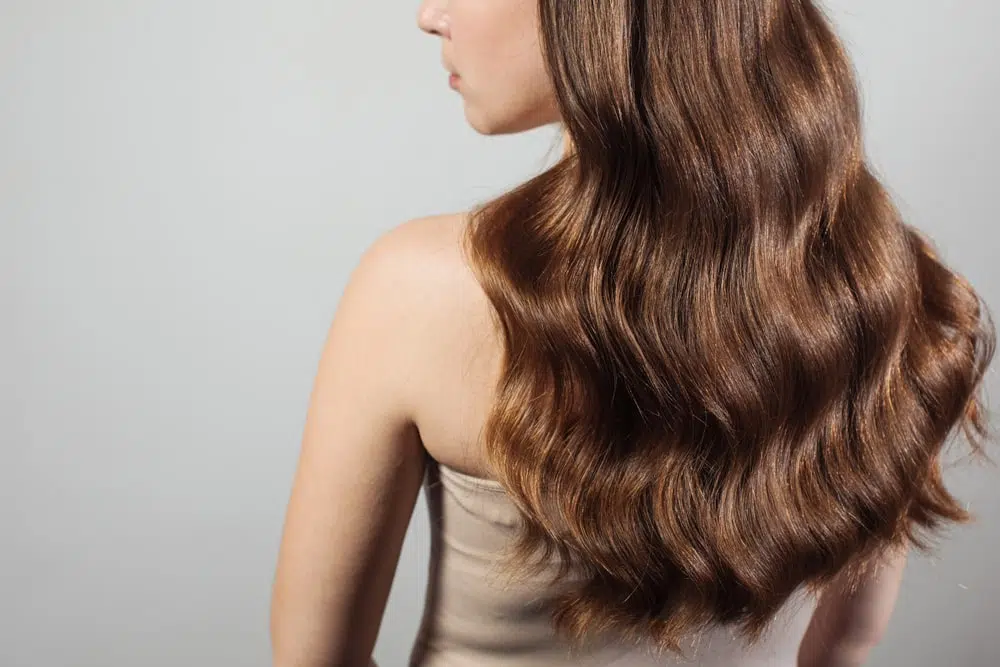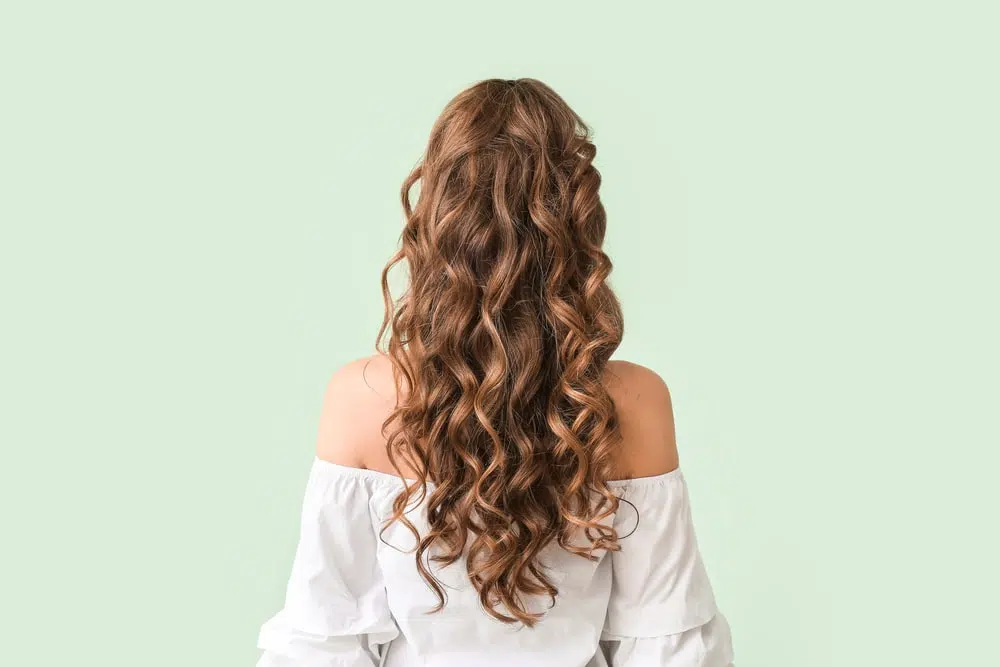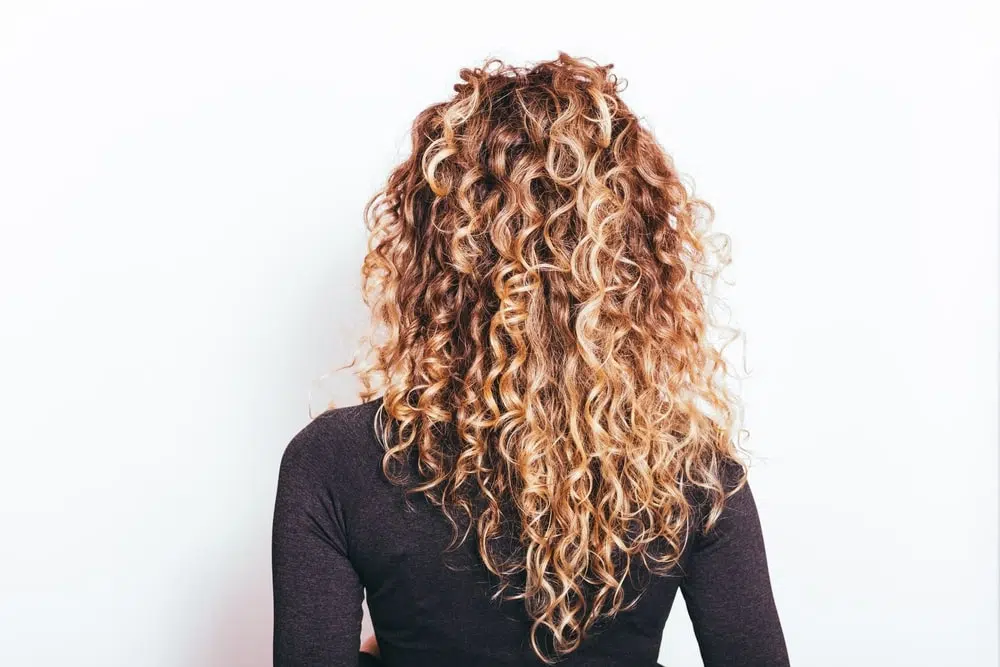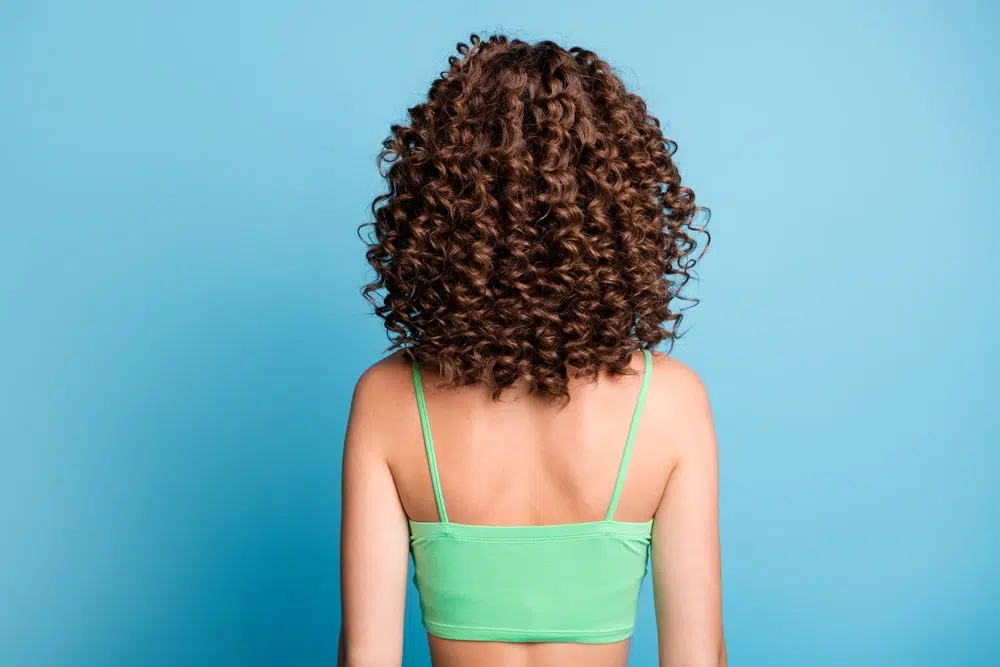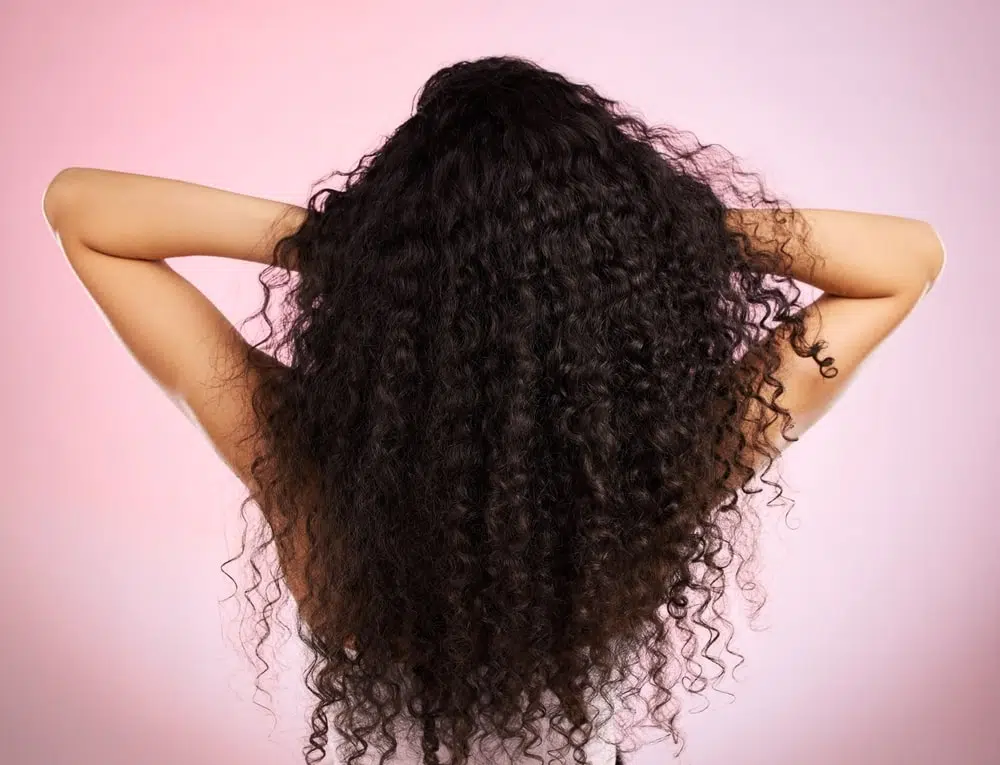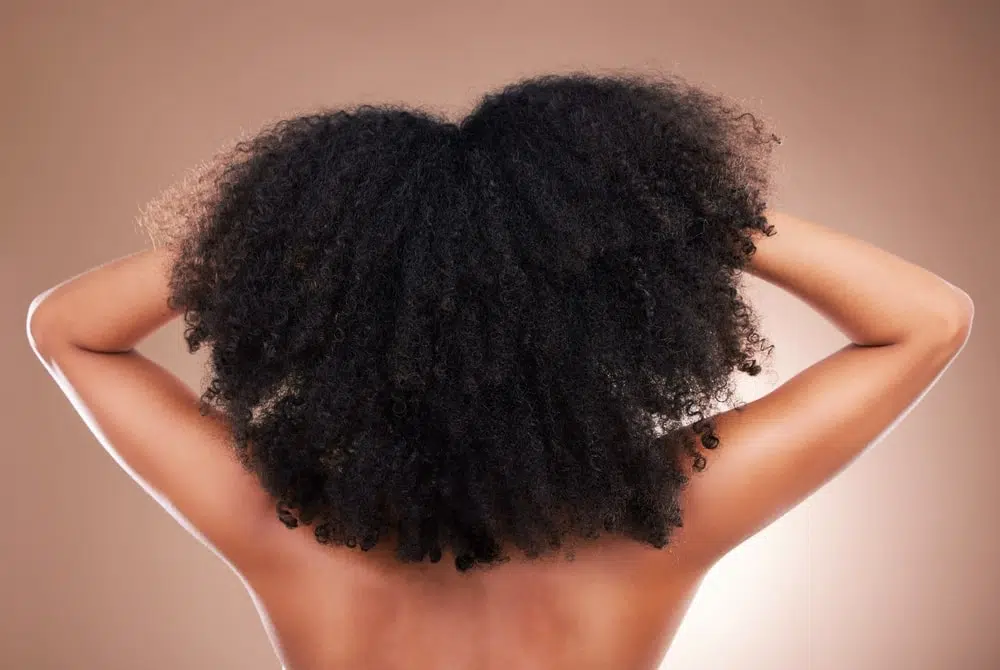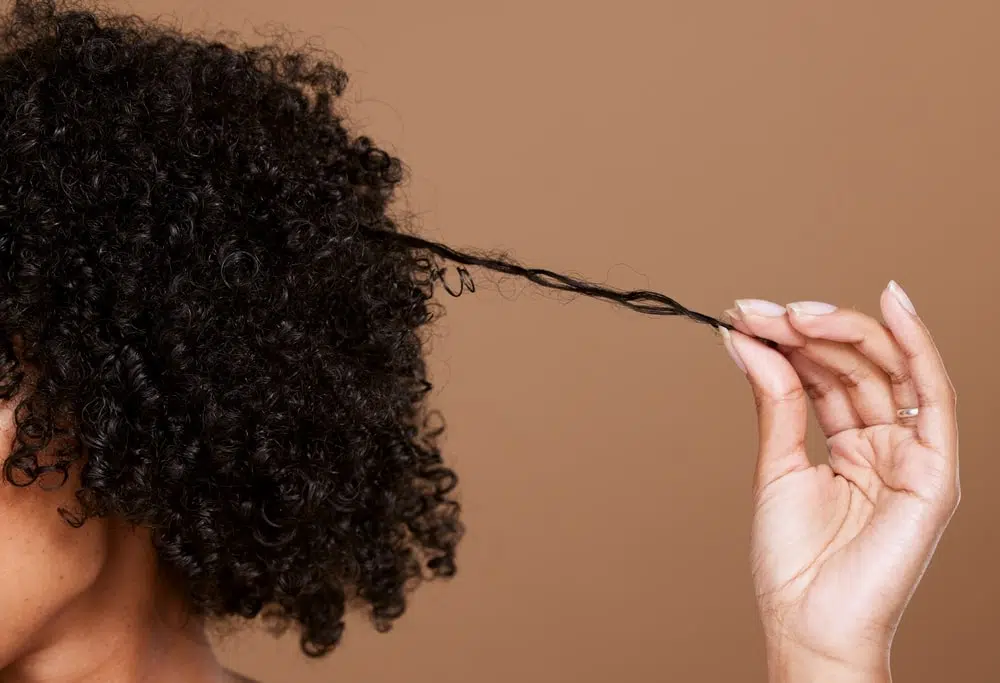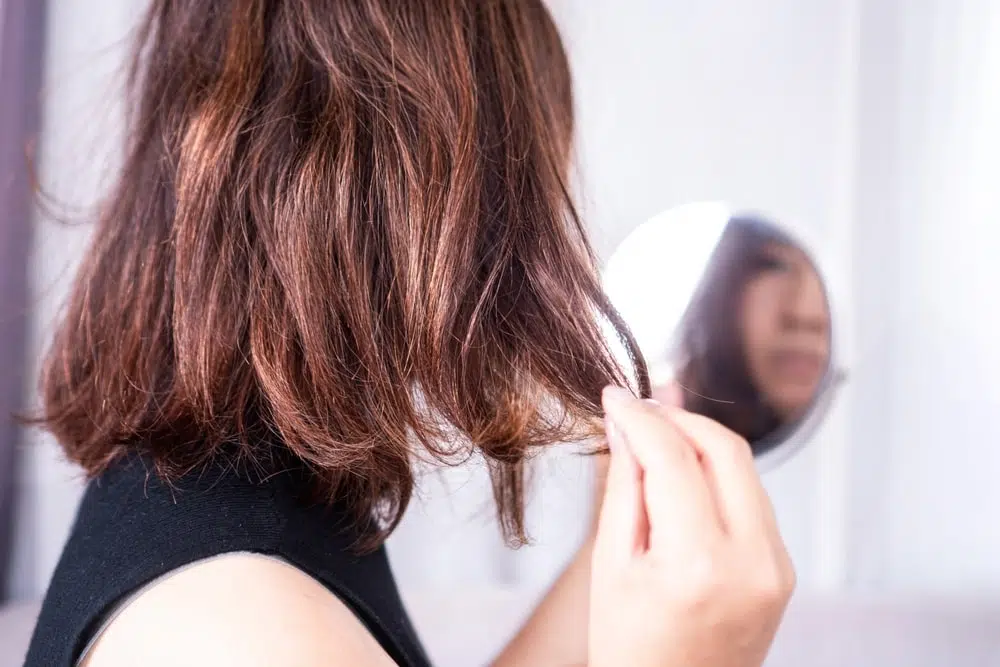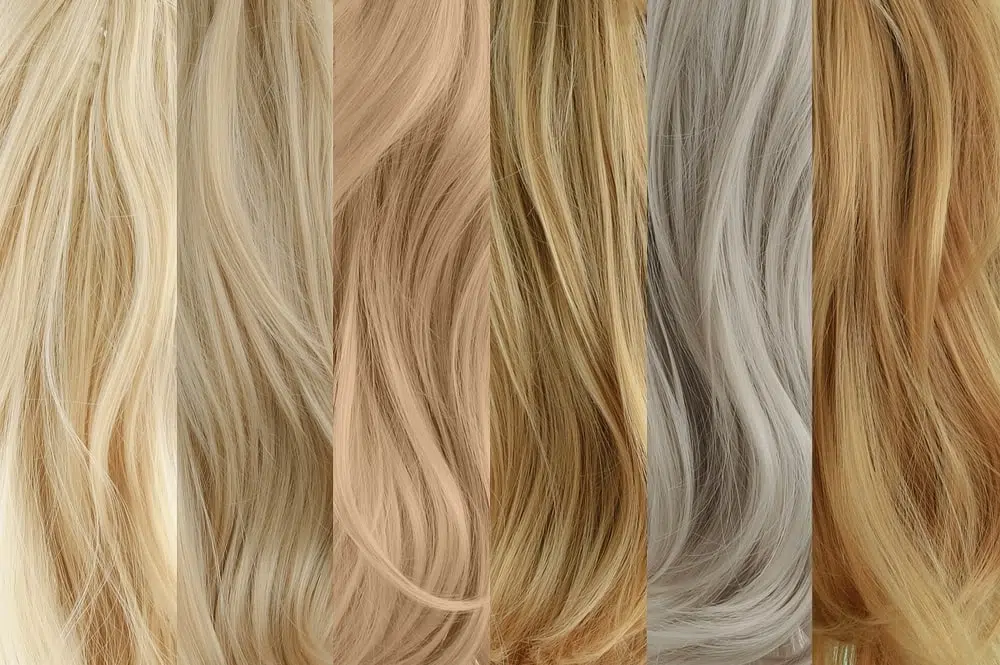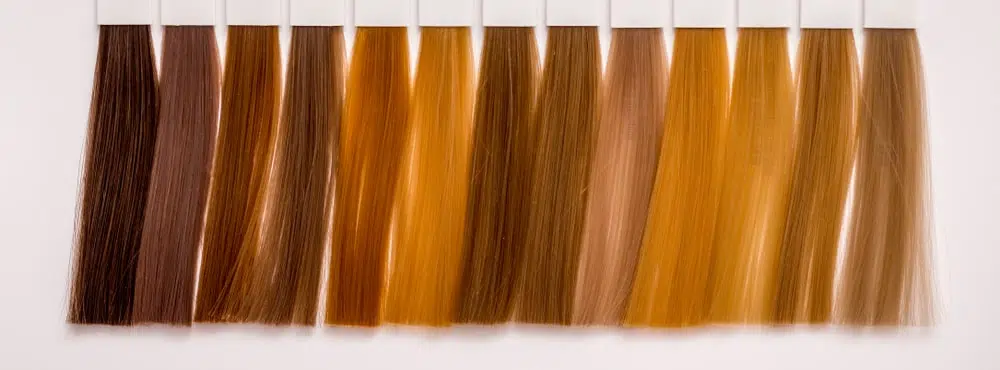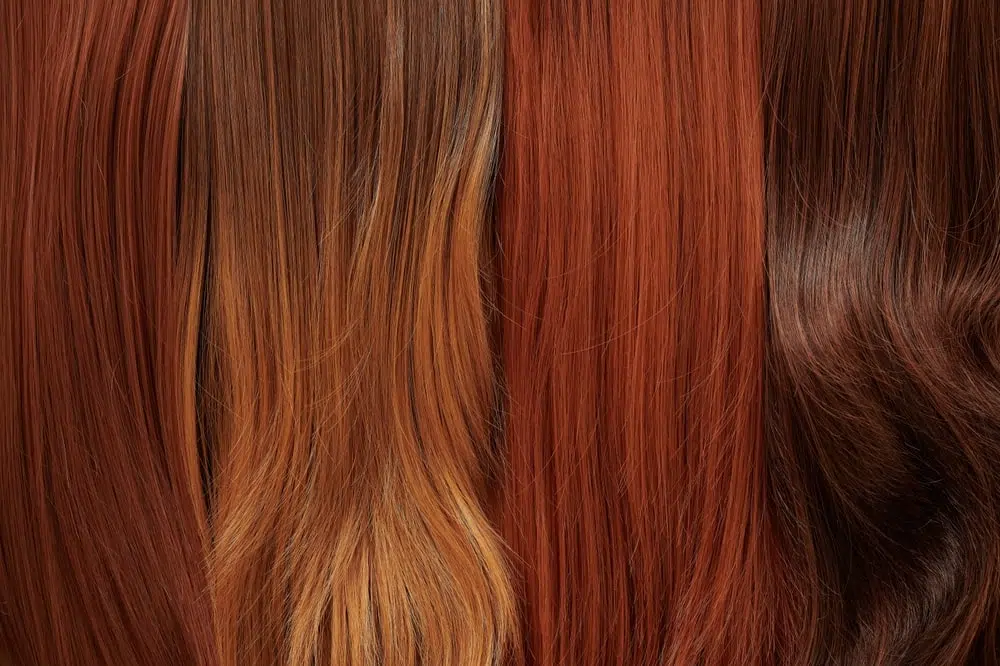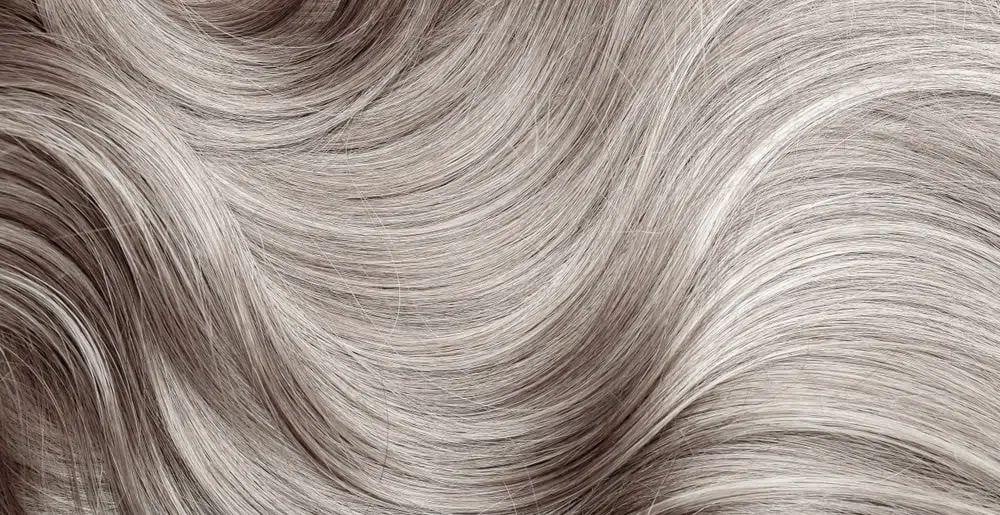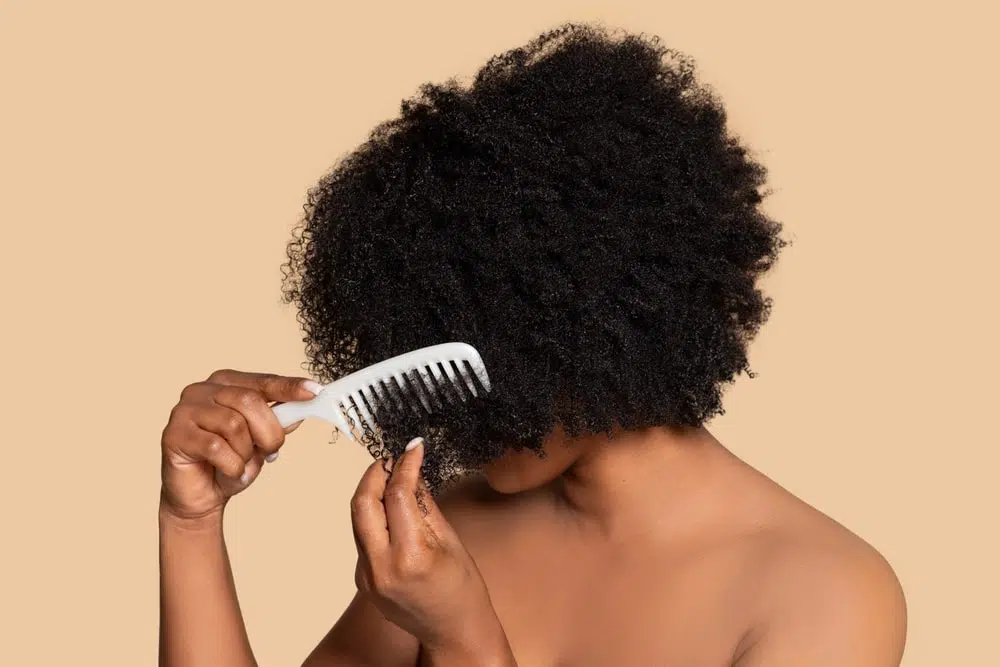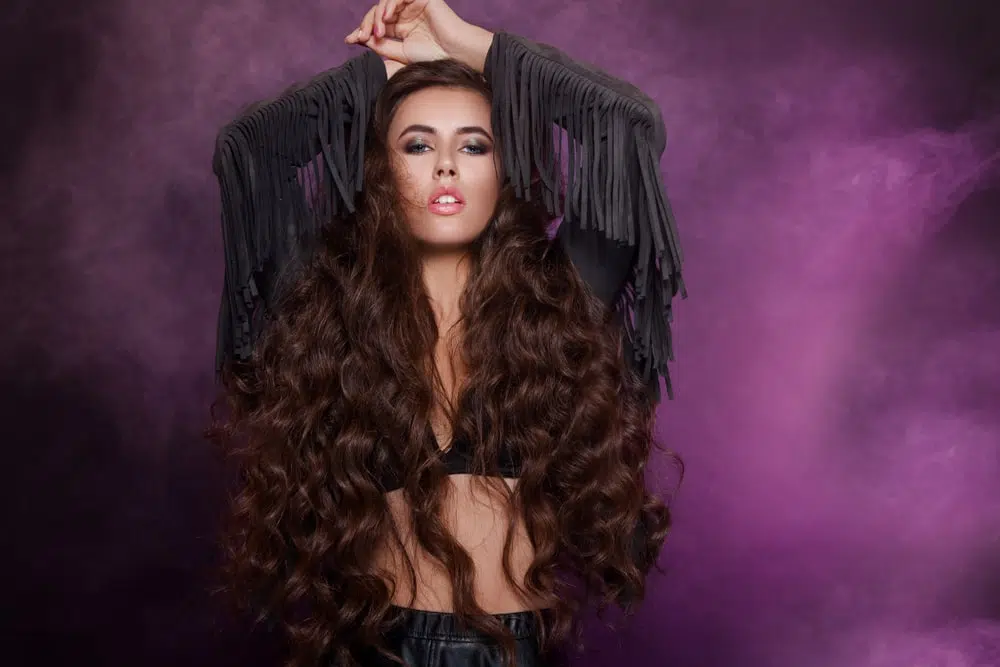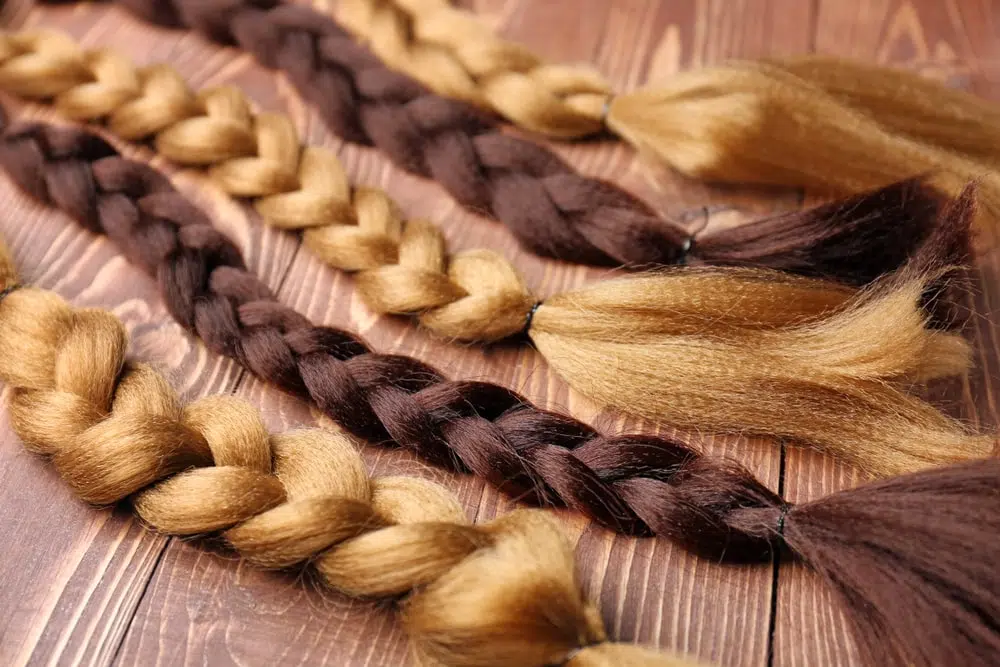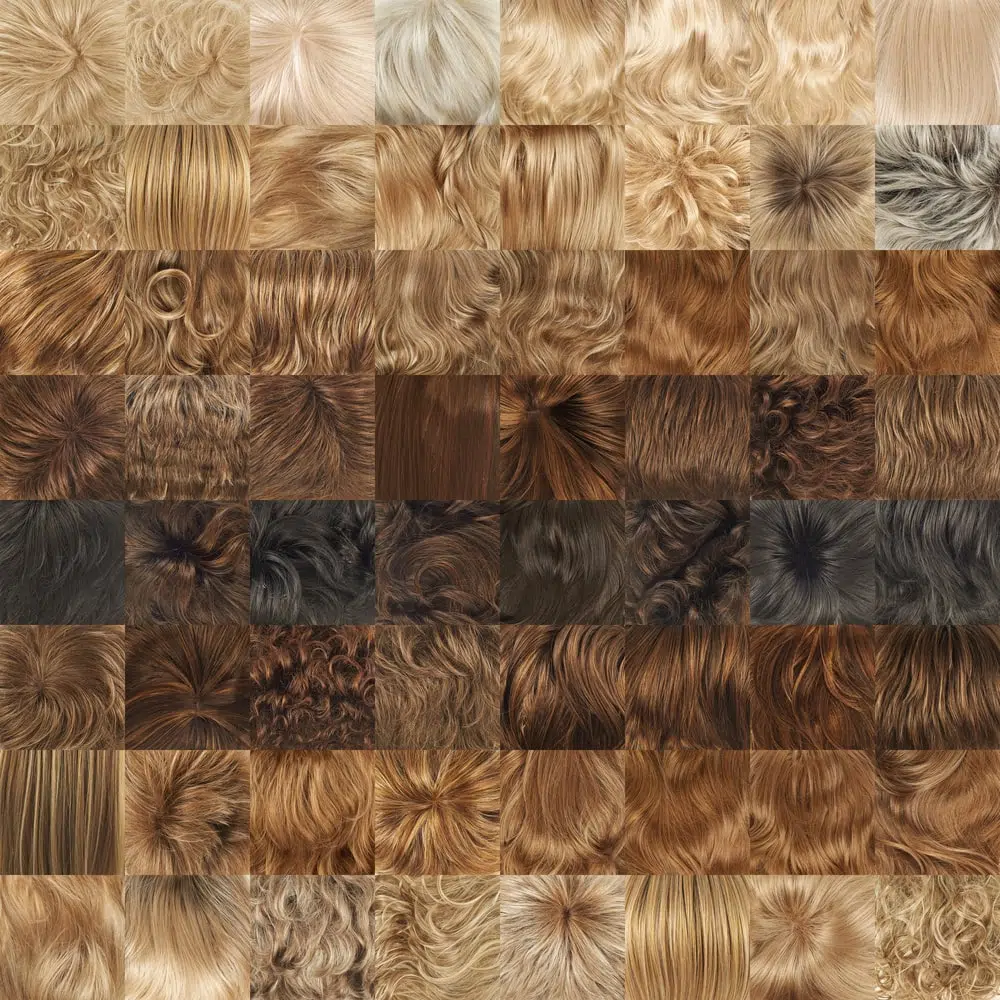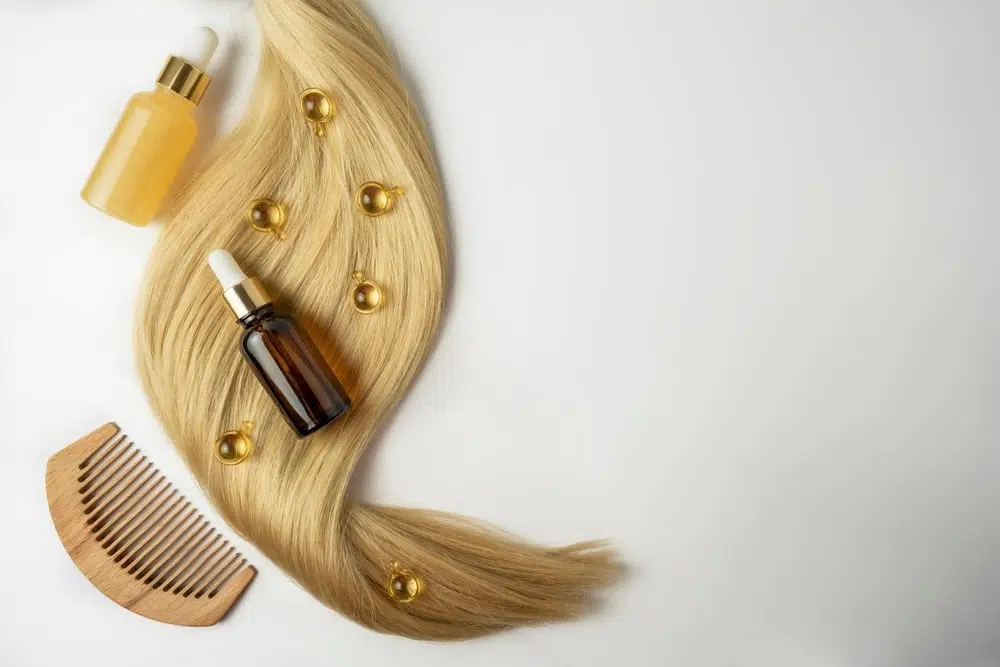Whether you’re curly, blonde or bald, you might have very different hair tomorrow. All 35 different types of hair can change completely in your lifetime. Some people even wake up one day with a totally different hair texture after a major hormonal shift… oops!
Hair is weird. This might not come as a surprise, knowing that it is made of the same stuff as rhino horns, horse hooves and bird feathers. There is plenty of room for experimentation. But don’t try anything crazy without consulting a trichologist or a dermatologist!
Let’s do the un-hair-able now and look at all the variations of this amazing organism called ‘hair’, and find out what your type is!
1. Different Types of Hair Based on Texture & Curl
Whether you have pin-straight strands or bouncy coils, your type is written in your DNA… but that doesn’t mean it won’t change overnight. Hormones, aging, and even the weather could flip the script on your locks.
Let’s break it all down—what type of hair do you have?
Types of Straight Hair (Type 1)
Sleek, smooth, and naturally glossy—straight hair has a mind of its own. If curls refuse to stay put, you’re probably in this category!
1A
Ultra-fine, silky, and flat. Zero volume, zero wave.
1B
Still straight, but with a little body. Might flip at the ends.
1C
Thick, coarse, and naturally resistant to curling. Hello, stubborn hair!
Types of Wavy Hair (Type 2)
Not straight, not curly—wavy hair sits right in between. It’s effortlessly messy and beach-ready 24/7.
2A
Barely-there waves, soft and flowy.
2B
More defined, slightly frizzy, and hello, humidity!
2C
Almost curly! Thick, voluminous, and unpredictable.
Types of Curly Hair (Type 3)
Springy, full of life, and naturally bouncy. But don’t be fooled—curly hair has a mind of its own.
3A
Loose spiral curls, soft and shiny.
3B
Tighter curls with loads of volume.
3C
Corkscrew curls, super-defined and densely packed.
Coily/Kinky (Type 4)
The tightest curls of all—coily hair defies gravity. Shrinkage is real, but so is its incredible volume.
4A
Well-defined, “S”-shaped coils.
4B
A zig-zag pattern, super soft and fluffy.
4C
The tightest coils, ultra-dense, and full of shrinkage magic!
2. Hair Porosity: The Secret to How Your Hair Absorbs Moisture
Ever feel like your hair drinks up oil like a sponge or, on the contrary, repels water like a raincoat? That’s hair porosity at work—the invisible trait that determines how well your strands absorb and retain moisture.
Wondering what is low porosity hair or how high porosity hair works? Let’s break it down!
Low Porosity Hair: Hydration Struggles Are Real!
Your hair repels water like it’s dodging responsibilities. Products just sit on top instead of sinking in.
- Key signs: Hair takes forever to dry, product buildup happens fast, and water beads up instead of absorbing.
- Care tip: Use lightweight products and deep condition with heat to open up the cuticle.
Medium Porosity Hair: The Golden Balance
Not too thirsty, not too resistant—medium porosity hair is the easiest to maintain. It absorbs moisture just right and holds on to it without drama.
- Key signs: Hair dries at a normal rate, holds styles well, and stays moisturized without effort.
- Care tip: Stick to a balanced hair routine—don’t overdo protein or moisture.
High Porosity Hair: Thirsty, But High Maintenance
Your hair soaks up moisture like a sponge, but it loses it just as fast. Porous strands mean frizz, breakage, and a love-hate relationship with humidity.
- Key signs: Hair dries super fast, frizz is out of control, and moisture disappears in hours.
- Care tip: Load up on deep conditioners, oils, and leave-ins to lock in hydration.
3. Different Hair Colors: Every Shade Has a Story
Your hair color is more than just pigment—it’s a genetic fingerprint, a rare trait, or even a sign of evolution. Each shade comes with a science-backed reason why it exists.
But let’s be honest… some hair colors are rarer than diamonds. Ready to find out where yours ranks?
Types of Blonde Hair: More Than Just ‘Blonde’
Only 2% of adults worldwide are naturally blonde. From platinum to honey, blonde hair isn’t just one color—it’s awhole spectrum!
- Platinum Blonde – The lightest of them all, almost white!
- Ash Blonde – Cool-toned, silvery vibes.
- Golden Blonde – Warm, sun-kissed glow.
- Strawberry Blonde – A soft blend of blonde and red.
- Dirty Blonde – Blonde with a touch of brown, naturally “lived-in.”
- Dark Blonde – Almost light brown but still qualifies as blonde.
👉 Did you know? Naturally blonde curly hair is one of the rarest combinations in the world!
Types of Black Hair: The Most Common… But Not Always The Same
Black hair is the dominant hair color worldwide, but that doesn’t mean it’s all the same. Some shades have cool blue undertones, while others lean toward deep brown.
- Jet Black – The darkest, deepest black with a blue sheen.
- Soft Black – A natural, warm black that looks brownish in sunlight.
- Blue-Black – A stunning mix of deep black and cool-toned blue.
- Brown-Black – Almost black, but with warm brown reflections.
👉 Black hair is technically the strongest, as it has the thickest individual strands.
Texture Variations in Black Hair (Common in African Hair Types)
Not all Black hair is the same! It comes in different textures, from silky straight to ultra-coily.
- Fine Black Hair – Soft but dense; may be wavy or loosely coiled.
- Coarse Black Hair – Thick strands with strong curl patterns.
- Kinky Black Hair (Type 4A, 4B, 4C) – Extremely coiled or tightly curled, forming dense patterns.
- Wavy Black Hair (Type 2B-2C) – Naturally wavy black hair found in some African, South Asian, and Indigenous groups.
👉 Wild fact: Some Indigenous Melanesian people naturally have blonde Afro-textured hair, with zero European ancestry!
Types of Brown Hair Color: The Most Versatile of Them All
Brunettes, this is your moment! Brown hair ranges from deep chocolate to sun-kissed caramel.
- Light Brown – The softest brown, almost dark blonde.
- Ash Brown – Cool-toned and slightly greyish.
- Golden Brown – Warm, honey-like reflections.
- Chestnut Brown – Rich brown with a hint of red.
- Mahogany Brown – A dark, reddish-brown hybrid.
- Dark Brown – Almost black, but with deep brown warmth.
Types of Red Hair Color: The Rarest of Them All!
Only 1-2% of the world’s population has natural red hair, making it one of the rarest hair colors in existence! It’s all thanks to the MC1R gene mutation.
- Strawberry Blonde – A subtle mix of blonde and red.
- Ginger – The classic fiery red shade.
- Copper Red – Bright and orange-toned.
- Auburn – A deep, brownish-red.
- Burgundy – Dark red with purple tones.
👉 Wild fact: Redheads produce their own Vitamin D more efficiently than other hair types!
Different Types of Gray & White Hair: Nature’s Silver Lining!
Going grey isn’t just about age—some people are born with white streaks (poliosis), while others develop silver strands as early as their teens.
- Salt & Pepper – A blend of black/brown with silver strands.
- Steel Grey – Dark, almost metallic grey.
- Silver Grey – Bright and reflective.
- White Hair – Completely pigment-free, making it actually see-through!
👉 Did you know? Blonde hair is more likely to turn white, while darker hair usually goes silver or grey first.
4. Types of Hair Density: How Much Do You Have?
Ever wondered why some people’s hair looks full and voluminous, while others struggle to cover their scalp? It’s all about hair density.
Spoiler alert: You might have fewer strands than your blonde best friend, but that doesn’t mean your hair isn’t thick! Density is all about how many strands are packed onto your scalp.
Ready to find out where you rank?
Low Density Hair: The Struggle for Volume
If your scalp peeks through easily, you’ve got low-density hair. It’s not necessarily thin—there are just fewer hairs per square inch.
- Key signs: Hair looks flat, doesn’t hold volume, and your scalp is noticeable.
- Care tip: Go for lightweight volumizing products, avoid heavy oils, and try a layered haircut to fake fullness.
👉 Did you know? Some blonde people have up to 150,000 strands, while redheads might only have 90,000—but red hair is naturally thicker!
Medium Density Hair: The Balanced Type
Not too thick, not too thin—medium-density hair is the golden middle ground. You’ve got enough volume to work with, but not so much that styling becomes a nightmare.
- Key signs: Hair covers the scalp well but isn’t super dense. Styles hold easily.
- Care tip: A mix of hydration + light styling products keeps your hair looking naturally full.
High Density Hair: Thick, Full, and Hard to Tame
If your hair feels like a jungle and your stylist takes forever to thin it out, congrats—you’ve got high-density hair. There’s a LOT of it, and that means major volume.
- Key signs: No scalp visibility, thick ponytails, and hair that refuses to go flat.
- Care tip: Use hydrating, anti-frizz products to keep it manageable. Heavy conditioners are your best friend.
👉 Wild fact: High-density hair takes longer to dry because there’s literally more of it—so if you’re wondering why your hair stays wet for hours, you’ve got your answer!
5. Hair Thickness: It’s Not About How Much Hair You Have!
Think your hair is thin just because it looks flat? Or thick just because it feels heavy? Think again! Hair thickness isn’t about how much hair you have—it’s about the size of each strand.
Yes, individual hair strands come in different thicknesses, and that changes how your hair looks, styles, and feels. So… what’s your type?
Fine Hair: Delicate, Soft, and Hard to Style
If your strands are barely visible when you hold one up, you’ve got fine hair. It’s naturally soft, silky, and prone to falling flat—but it also gets oily faster than a burger wrapper.
- Key signs: Hair feels super soft, gets greasy fast, and struggles to hold volume or curls.
- Care tip: Use lightweight, volumizing shampoos and avoid heavy oils or butters. Dry shampoo is your lifesaver!
👉 Did you know? People with fine hair actually have more hair strands—because the strands take up less space!
Medium Hair: The Perfect In-Between
Not too thin, not too thick—medium hair is the easiest to manage. It holds styles, has decent volume, and balances oil production.
- Key signs: Hair isn’t too soft or too coarse. Holds curls but isn’t super thick.
- Care tip: Stick to hydrating, balanced products—too much weight makes it greasy, too little moisture makes it frizzy.
Coarse Hair: Strong, Thick, and Unbreakable
If your hair feels like a single strand of thread, you’ve got coarse hair. It’s the thickest type, meaning stronger, more resistant strands—but also more prone to frizz, dryness, and rebellious behavior.
- Key signs: Hair feels rough, dries slower, and might be naturally frizzy.
- Care tip: Deep condition often! Coarse hair craves moisture, so use creamy, hydrating products to keep it smooth.
👉 Crazy fact: Coarse hair is the strongest type—it can handle up to 200 grams of weight per strand!
Hair Elasticity: The Secret to Strong, Bouncy Strands
Ever stretched a strand of hair between your fingers and watched it bounce back or snap? That’s hair elasticity! It determines how well your hair stretches without breaking, and it’s a huge deal for styling, strength, and hair health.
So… is your hair a superhero or a breakage-prone villain?
High Elasticity Hair: The Ultimate Bounce Back
If your hair stretches like a rubber band and snaps back into place, congrats—you’ve got high elasticity hair! This means your hair is strong, healthy, and resistant to breakage.
- Key signs: Hair stretches far without snapping, curls stay defined, and it resists heat damage better.
- Care tip: Maintain that strength with protein treatments + deep conditioning—balance is key!
👉 Did you know? Healthy curly and wavy hair usually has high elasticity, which helps it keep its shape!
Medium Elasticity Hair: The Best of Both Worlds
Not too stretchy, not too stiff—medium elasticity hair is the perfect balance. It’s strong enough to handle styling but still needs a little extra care to stay bouncy.
- Key signs: Hair stretches a little before returning to normal, holds styles well, and isn’t too fragile.
- Care tip: Keep up a moisture-protein balance to prevent it from shifting into low elasticity.
Low Elasticity Hair: Fragile and Breakage-Prone
If your hair snaps almost instantly when stretched, you’ve got low elasticity hair. It’s weakened, brittle, and prone to breakage—but don’t worry, it can be fixed!
- Key signs: Hair breaks easily, struggles to hold curls, and feels weak after chemical treatments.
- Care tip: Load up on protein treatments and strengthening masks to rebuild elasticity and avoid excessive heat styling.
👉 Crazy fact: Bleaching, excessive heat, and chemical treatments can destroy hair elasticity, making it more prone to snapping!
Hair Growth Patterns: Why Your Hair Has a Mind of Its Own
From whorls to cowlicks, your hair growth pattern is genetically programmed, and let’s be honest—sometimes, it’s pure chaos.
Whorls: The Hair Swirl That Defines Your Style
A hair whorl is that natural spiral on your crown that determines which way your hair falls. Some people have one, some have two, and some (the lucky ones) have none!
- Key signs: Hair naturally falls in a spiral at the crown, sometimes causing a visible “swirl” effect.
- Care tip: If styling feels impossible, work with your whorl—not against it!
Cowlicks: The Annoying Rebel Strand
If you have a random tuft of hair that refuses to lay flat, congrats—you have a cowlick. It grows in the opposite direction from the rest of your hair, and let’s be honest… it has a mind of its own.
- Key signs: A stubborn patch that sticks up or grows sideways, especially near the forehead or crown.
- Care tip: Use heat styling to tame it, or just embrace the messy-chic look!
👉 Wild fact: Cowlicks are genetic—if your parents have one, chances are, you do too!
Straight-Growing Hair: The Lucky Ones?
Some people’s hair grows in one direction, lays flat, and never fights back. Is it the dream? Maybe… unless you’re trying to get volume or texture.
- Key signs: Hair falls straight down, rarely sticks up or changes direction.
- Care tip: Use texturizing sprays or layered cuts for extra volume.
Hair Health: Is Your Hair Thriving or Struggling?
Your hair might be bouncy and thriving, or it might be damaged and screaming for help. But how do you know? Let’s diagnose your strands!
Virgin Hair: Never Touched, Never Treated
Never dyed, never permed, never chemically processed? That’s virgin hair! It’s the strongest, healthiest version of your strands.
- Key signs: Naturally shiny, smooth, and holds moisture well.
- Care tip: Keep it that way with gentle shampoos and minimal heat styling.
👉 Fun fact: Once you color or chemically treat hair, it can never be “virgin” again!
Processed Hair: Treated but Still Thriving
If you’ve colored, relaxed, or permed your hair, it falls under processed hair. This means your cuticles have been altered, making it more fragile.
- Key signs: Hair is more porous, sometimes drier, and needs extra care.
- Care tip: Use bond-building treatments (like Olaplex) to keep it strong.
👉 Crazy fact: Bleach literally eats away your hair’s protein, so deep conditioning is a must!
Damaged Hair: In Need of Serious Help
If your hair feels like straw, breaks easily, and has split ends everywhere, it’s in damage control mode. But don’t panic—there’s hope!
- Key signs: Hair feels rough, dry, brittle, and frizzes uncontrollably.
- Care tip: Hydration, protein, and trims—your hair needs all three to recover!
👉 Shocking fact: Split ends can travel UP your hair shaft—so if you don’t trim them, they just keep going!
Which of the Following is Not a Type of Hair?
Trick question? Maybe. But if you’ve made it this far, you probably know hair isn’t just straight or curly—it’s a whole spectrum!
So, let’s play a quick game. Which of the following is NOT a real hair type?
- A)Coily Hair
B)Porous Hair
C) Wavy Hair
D) Straight Hair
Got your answer? 🤔
If you guessed B (Porous Hair)—you’re right! Porosity is a hair characteristic, not a type! Hair porosity determines how well your strands absorb and retain moisture, but it doesn’t define whether your hair is straight, curly, or wavy.
Now that we’ve settled that—are you sure you know your true hair type? Let’s find out!
What Type of Hair Do I Have?
Still unsure about your hair type? Maybe your strands feel straight some days, wavy on others—or you’re not sure if your curls are 2C or 3A.
Figuring it out matters more than you think. The right products, treatments, and haircare routine depend on knowing your exact hair type.
Get a Free Hair Type Analysis with Dr. Serkan Aygin
Why guess when you can get expert advice for free?
Dr. Serkan Aygin, voted Best Hair Doctor in Europe (2019) by a European medical committee in Paris, is offering free online consultations.
✅ Find out if you have high or low porosity hair
✅ Identify your true curl pattern or straightness level
✅ Discover the best care routine based on science
Click here to book your free consultation with Dr. Serkan Aygin!

